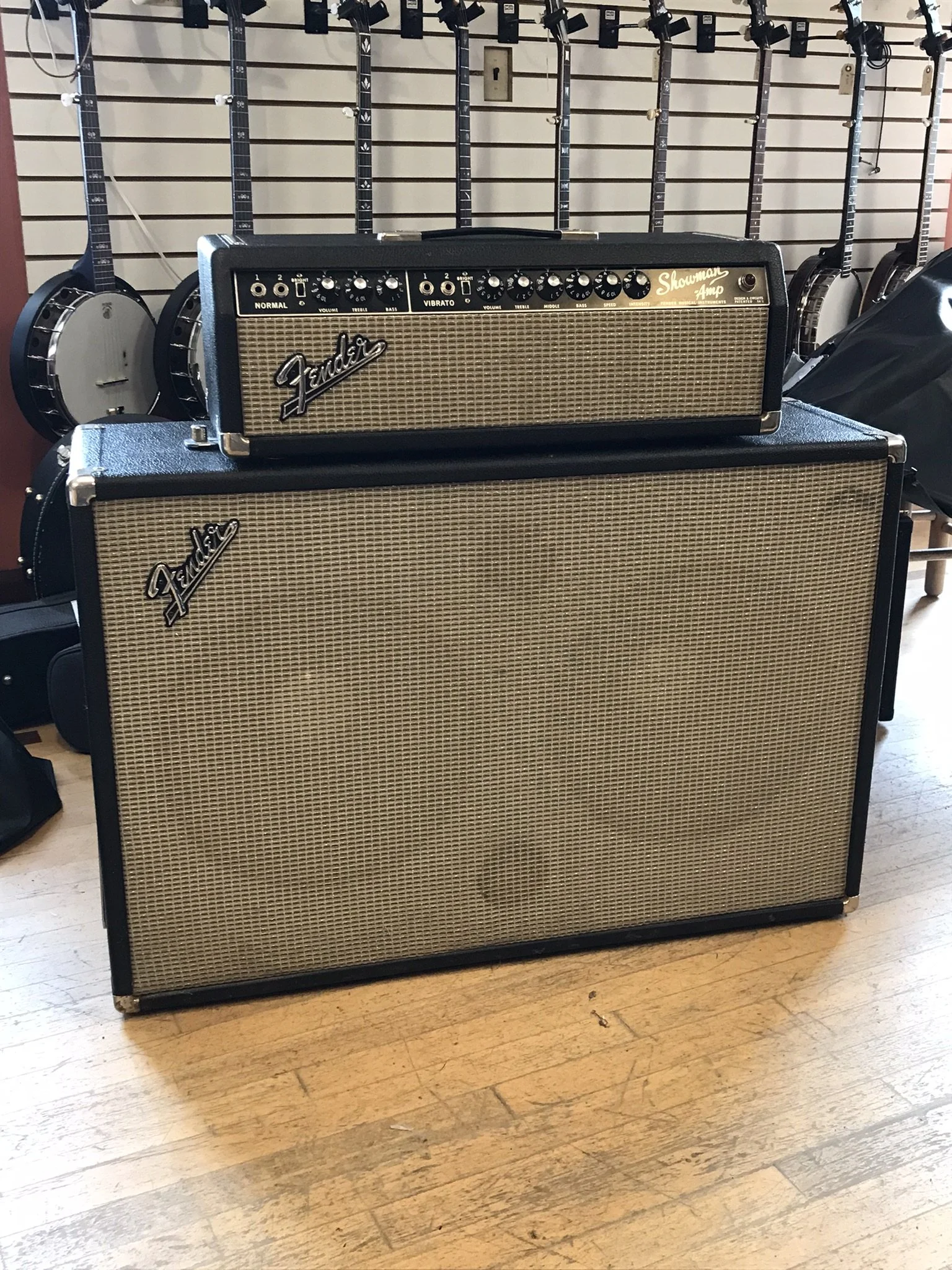Universal Audio Showtime
We are all in the incredible place today where most any amp ever built is available to us from a tonal perspective through powerful and well done modelling. Yes, some modelling options suck and blow simultaneously but there are a many that are indistinguishable from the real thing on a recording, and if used playing live with all the other noise and clatter, no one in the audience will either know or care, other than the grumpy musician in the back who thinks that gear is more important that the player.
The Fender Showman
Fender’s Showman amplifier was an amazing tool in the 1960s. It was built to stay clean into enormous volume levels. As a factory release it delivered 85 watts of tube power into a 2x15 cabinet. The original blackface had tremolo (marked as vibrato) but no reverb. Later in its life as the Dual Showman (100 watts) a silverface version added Fender’s well respected reverb.
As an admitted lover of reverb, why would I be interested in such a powerful amp, that did not distort and have no reverb?
For the massive clean headroom, needed for some of the sixties music genres. The Showman and later the Dual Showman were used by such luminaries as the Beach Boys and the King of Surf Guitar, Dick Dale. In fact Mr. Dale continued to badger Leo Fender for more powerful and thus louder Showman amps because he needed huge amounts of clean volume for his shows, back when a PA was not around.
Vintage Showman amplifiers are scarce and very expensive. Fortunately we have options and the ever impressive James Santiago of Universal Audio worked on the UA Showtime plugin. Why call it the Showtime? Ask UA. I have guesses but they are really irrelevant in the context of the super sound that evokes the real thing, but in a volume controllable manner.
Universal Audio Showtime
In the graphic above, we see an aspect of the UA Showtime. A very simple layout, showing the piggyback design of the original Showman, a head on a separate cabinet. In this example, we see very simple controls. However a big difference from the same vintage Deluxe Reverb, is that the Showman didn’t really overdrive, could get massively loud, and had no reverb at all. It did however have a dedicated midrange tone circuit and that coupled with the dual huge 15” speakers made for a unique tonal palette. Yes, there’s not reverb. However if one is using a plugin for recording or live performance, there are zillions of superb reverb plugins. Some of my faves are EMT plate reverb plugins or the massively powerful, but with tangible learning curves, Lexicon reverbs.
If you know the Deluxe Reverb or Twin Reverb amplifiers well, the UA Showtime brings a very different tone. Potentially bright without being nasal, staying clean unless you push the midrange really hard and perfect for shimmery, jangly guitars. I like it particularly with lower output pickups like those in an old style Stratocaster or a Rickenbacker, but it also makes a fine jazz amp with a hollowbody guitar. In fact, it’s native cleanliness is a great vehicle to really hear the sound variations in different pickup designs.
Quick Samples
For these really short samples, I used four factory presets to give you a sense of the amplifer. The first is the default Showtime 64. The second is Vintage Clean. The third is Bright and Jangly and the fourth is Warm Jazz. I didn’t include any of the options with tremolo, because it’s not an effect that I sync with myself, entirely through lack of practice and that the pulsing gives me a headache. For those who like tremolo, or vibrato as Fender continues to call it, be assured it sounds like an old Fender tube vibrato.
Why Should You Try It?
I rarely meet a guitarist who would not love the options of yet another amplifier. And here’s the AWESOME News! Until October 31, 2025 go to https://uaudio.com and you can download the Showtime plugin in for FREE. When the promo is over, it will revert back to its regular price of $149 USD MAP. To use the plugin, you will need to download the FREE UA Connect software which will install and activate the plugin. You get VST, AU, and AAX builds so usable in most any DAW. The very worst thing that could happen is that you try it and don’t like it, but that’s a very low probability outcome and even if true, it has only cost you a bit of time.
I think it is brilliant and I am very pleased to have it in my virtual amp room. It includes three different microphone configurations and they all have their own distinctive sounds. So download it and try it out. What have you got to lose?
If you like what I do here for you, please become a supporter on Patreon. Your monthly contribution makes an enormous difference and helps me keep things going. To become a Patreon Patron, just click the link or the button below. Always feel comfortable to send in a question or to post a comment. I read them all and respond as appropriate. Thanks for your support of my work. I’m Ross Chevalier and I look forward to sharing with you again soon.


